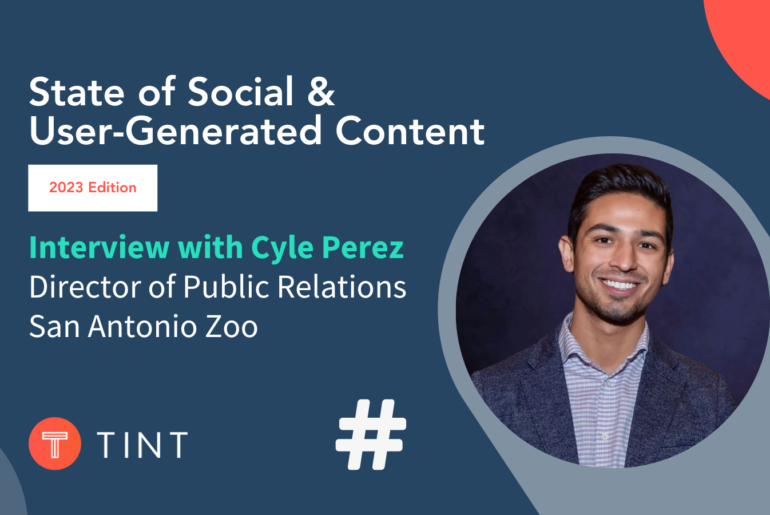You are tuning in to the community powered marketing revolution already in progress; welcome to the 2024 Big List of community powered Marketing Statistics.
The statistics on this list represent the culmination of over a year’s worth of research, with other supporting data included for context.
Online communities have become pivotal for facilitating authentic interactions. Marketers face challenges navigating between owned channels and social media. The evolution of community-building resources empowers digital practitioners to have greater ownership and purpose rather than solely relying on the influence of external platforms.
Community is more than a buzzword
Cultivating and managing a digital community has become an entire field of practice, with full-time roles, advanced certifications, and senior leadership allocating budget to the practice. Research from Gartner indicates that consumers are starting to pull back on social media platforms, driving organizations to launch owned brand communities to maintain that deep digital connection.
- 76.6% of consumers wish their favorite brands had a community.
- 27.5% of marketers own a dedicated online brand community distinct from social media and 19.5% are building one now. 16.0% of marketers who don’t have one wish they did.
- 59.5% of marketers are concerned about losing access to their brand’s fans on social media due to an algorithm change.
- 40.9% of consumers say their involvement in online communities will increase in 2024. That’s an increase of 9% year over year.
- 67.4% of consumers feel more connected through community than social.
Brands are a reflection of the consumer
People want to buy from a brand that reflects their worldview. Marketers need to move beyond the superficial use of the term “community” and focus on understanding the meaningful impact of community-driven strategies. Our report unearths the dynamics influencing consumer spending, loyalty, and intent, each affecting how people connect and relate to a brand.
- 69.2% of consumers believe the brands they buy reflect who they are and are important to how they want to be perceived .
- 77.5% of consumers are incredibly/very loyal to their favorite brands… but 42.4% are very likely to try competitors to those favorite brands.
- 73.6% of consumers are more likely to purchase more frequently because of an online brand community – an increase of 8% over 2022.
Building community powered Feedback Loops
Owned Brand communities play a significant role in powering feedback loops. Consumers want to share their voice and perspective with brands. Communities provide a discrete but public forum for ongoing feedback. But communication must go both ways. Consumers want to know that the brand is listening and responding to their perspectives.
- 88.1% of consumers believe it’s important to have two-way dialogue with brands so they can share feedback and opinions.
- 97.3% of consumers are motivated to be loyal and purchase more frequently when a brand listens to their opinions and feedback.
- 74.5% of marketers agree it’s important to have two-way communication with consumers, but 1 in 4 believe their brand’s two-way consumer communication is weak.
- 88.0% of consumers are motivated when a brand makes them feel involved, like they are part of a team.
Consumer Insights Drive Action
The brands that engage, listen, and respond are able to discover a treasure trove of valuable information specific to their organization. These insights can drive product creation, marketing campaigns, and generate vital User-Generated Content like ratings and reviews that support in-store and eCommerce sales.
- The top way marketers use or plan to use online communities is to collect consumer opinions (51.0%), amplify other marketing initiatives (45.0%), and grow loyalty (41.0%).
- 67.5% of marketers believe community-building is important to creating emotional loyalty.
- 70.0% of marketers feel community-building is important to customer retention.
- 42.0% of marketers feel they don’t have cost and time efficient approaches to obtain all of the consumer insights they need for their brand.
Challenges of Data and Hyper-Personalization
Community-centric marketing creates direct consumer relationships, serving as the bond that creates enduring brand loyalty. But brands must also deliver on their commitments to hyper-personalized experiences and responsible management of user data.
- 39.1% feel a brand’s community provides more personalized, tailored, and relevant experiences than its social media account.
- 58.5% of marketers struggle to get consumers to provide zero party data.
- 54.0% of marketers struggle to keep consumer data up-to-date for effective personalization.
- 93.4% of consumers are more comfortable sharing their data if they know what it’s being used for.
- 91.3% of consumers share their data in exchange for unique experiences and offers.
- 74.0% of consumers feel brands fall short of providing personalized experiences.
- 67.2% of consumers are disappointed when they share their data and the brand doesn’t do anything with it.
Loyalty and Advocacy are in the spotlight
As we predicted, marketers have faced challenges in building brand loyalty and advocacy in the constantly accelerating world of digital and social. Brand communities have emerged as the ultimate bridge between purchase and loyalty. Community members are more likely to leave reviews, provide feedback, and make future purchases. The future will see owned communities continue to shape the landscape of brand-consumer relationships.
- 40.1% of consumers are more likely to stay loyal to a favorite brand because of engaging with it in an online brand community.
- In the past year, marketers top 3 challenges were in securing authentic advocacy.
- 64.5% struggled to secure a large volume video/stories UGC
- 62.5% struggled to maintain a pipeline of fresh reviews
- 62.0% struggled to secure high quality video/stories UGC
- 81.5% of community members identify as advocates.
- 68.0% of consumers are likely to create videos about brands because they belong to a community – an increase of 74% increase over 2022.
- 91.0% of consumers are more likely to leave a review because they belong to a community – an increase of 22% over 2022.
Brand Communities Drive Revenue
Communities support brands across departments, from marketing to product to retailing. But, perhaps the most important validator, is the fact that established brand communities are drivers of revenue. Leadership always wants to know how initiatives affect the bottom line, and community members are more likely to purchase, make additional purchases, and keep a business top of mind.
- 81.6% of consumers are more likely to purchase new product varieties because of an online brand community.
- 77.1% of consumers are likely to use an online community to purchase products.
- 68.5% of marketers are planning to prioritize community-building over the next 2 years.
- 78.2% of consumers say interacting with a brand’s online community makes that brand more “top of mind” when shopping.
- 68.7% of consumers prefer to purchase brands that they interact with in an online community.
2024 is the year of community powered marketing. More than a buzzword, or flashy growth hacking strategy, brand communities lay the foundation for long-term brand affinity and loyalty, while driving immediate revenue growth. Learn how TINT powers community initiatives for the world’s largest brands. Schedule a demo today.




